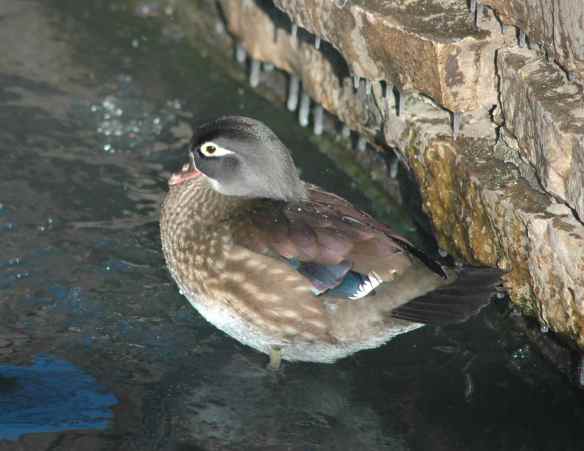There are a lot of scientific journals out there. There are the big shots (Science, Nature), the bird journals (The Auk, The Condor), the topic-specific (Behavioral Ecology), etc. And then there is The Journal of Experimental Biology, or JEB. I love JEB. It claims to be the journal for “comparative animal physiology” but that doesn’t cover the half of it. JEB is about crazy, wonderful strangeness—strange animals and strange scientific methods. Following are two characteristically odd JEB studies: snake eyes and how walking sticks walk.
Monthly Archives: February 2014
“Ordinary Extraordinary Junco” and the wider world of juncos
Ah, my noble research junco. Dramatic black hood, peach flanks, rusty back, hopping around the Sierra Nevada mountains and (hopefully) giving me insights into behavior, life history, and adaptation to environmental variability. That’s the story you mostly get from this blog, because it’s the one that I’m most intimately wrapped up in. But it’s a very small piece of the larger world of juncos and junco research.
The Junco Project has produced a series of videos entitled “Ordinary Extraordinary Junco,” all about the wide world of junco research. The videos are wonderful, covering the research in an interesting and accessible way, and filled with great footage of juncos doing every possible thing. If you only have time to watch one, check out Chapter 2: Appalachian Spring, which shows the field methods that I also employ, like nest searching, mist netting, banding, and collecting blood. It’s one thing to see photographs, and quite another to see how these birds look in motion. (As you watch, try to ignore the sound of my so-intense-it’s-audible envy of the resources these junco researchers have—aviaries! eight field assistants! nest cameras! radio-tracking devices!)
Just as my research is one tiny part of junco research overall, my population of juncos is a tiny portion of the juncos that are out there – and many of them are quite different. The juncos in Berkeley, CA, despite being quite far away from the Sierra Nevada juncos and many thousands of feet lower in elevation, look pretty much the same as “my” juncos…

Could ducks in the water melt ice?
A reader question today! Dolores asks: Would the body heat of a modest mixed gathering of water birds (gulls, ducks etc) melt ice at the edges of a pond?
The answer to this depends on context. We can start by establishing some extreme end-points: one duck at the edge of a huge lake in way-below-freezing weather would not be able to melt any ice.

Female Common Goldeneye in Lake Michigan: it’s a good thing the lake is already melted, ‘cos you’re not going to melt anything.
Twenty ducks splashing around spiritedly in a kiddie pool with the barest skin of ice in weather just at the freezing point would probably, if you waited long enough, cause the ice to melt.
Between our two endpoints are more “normal” circumstances: a group of waterbirds hanging out at a pond. Could they melt any ice?
Winter Olympics: Animal Edition
Don’t get me wrong, the winter Olympics is fun and all, but isn’t it just a little bit small-minded to limit ourselves to human competitors? Here are some videos illustrating how great this athletic competition could be if we made it just a bit more inclusive (and added some new events):
Event: Team Vertical Iceberg Jump. Competitor: penguin
Event: Snow Diving. Competitor: red fox.
Anthropomorphism and how we think about animals
I once saw a talk by a scientist who works on jumping spiders—those colorful, fuzzy, big-eyed teddy bears of the spider world—in which the speaker paused, after discussing the spiders’ excellent vision (courtesy of their many eyes, which are of several different types and see in various ways) and their sensitivity to vibrations (which they perceive through their legs and through the many fine hairs covering their body), to wonder, “What does the world feel like to these animals? What is it like to be a jumping spider?”
What is it like to be something other than human? There is so much research touching on this question, studies asking everything from “How does a bee navigate?” to “Are rats kind?” It’s a fascinating question, and it’s incredibly difficult.




